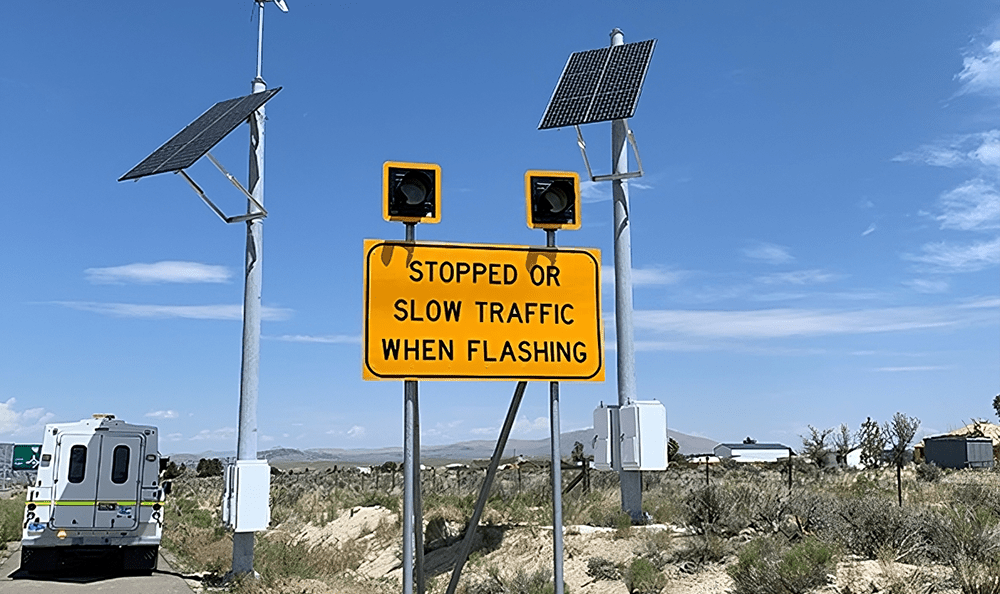When it comes to I/O implementation, system integrators have a lot to consider. They find the right fit for components in compact control boxes, figure out flexible ways to pull data into a SCADA, and determine the source and level of power for every device mounted to their DIN rail. On top of all that are environmental factors: Where will the control box live? What kinds of temperature and humidity ranges will it experience? Is rain, dust, or condensation a factor? An outdoor application increases these considerations.
Braving the elements is made easier when the control box is kept tidy. As noted in our indoor cable management article, there are benefits to keeping a clean setup beyond looks, like safeguarding cables and devices while also freeing up space. The importance of cable management is especially true for an outdoor application that may be exposed to environmental extremes. (Aesthetics do matter, if TikTok’s nearly 400 million views for #CableManagement are any indication.) Here are tips and supplies to help manage an outdoor control box.
Tips for Cable Management in an Outdoor Application
Determine power draw and source: Consider how you plan to power your control box and compare that source to the requirements of all components. Include sensors in your equation—passive infrared sensors are low power, whereas a piezoelectric pressure sensor will draw more. Going solar? Ensure the battery will fit alongside all the other components of the control box and add a mounting bracket to ensure it stays in place.
Gauge the operating temperature: Each component found in a control box will have parameters for temperature tolerance. The X-410™, for example, has an operating range of -40℉ to 150℉ (-40℃ to 65.5℃).
Add heat if necessary: In some applications, a control cabinet heater may be required to keep lower temperatures manageable. Strip heaters provide radiant heat, while PTC heaters can use fans to circulate air within the box.1 Heating components should be thoughtfully installed. Follow the documentation for the heater, adhere to local code for installation, and use proper insulation and heat-resistant enclosures. Monitor the running temperature of the control box once it’s complete.
Check the water and dust ratings: Developed by the International Electrotechnical Commission, the IP (ingress protection) rating system grades enclosures on how well they protect against the intrusion of dust or liquids. Control boxes can be IP rated, but that rating is only as good as the seals to any openings in the box. Utilize rubber grommets and be aware of any potential places where water might pool up or drip along the underside of the box. Your control box might be able to withstand the worst kinds of weather, but that doesn’t mean you should have to deal with it to monitor and control your system. Cellular and cloud-compatible devices let you access your system from the comfort of a computer screen.
Consider the conduit: The material of the conduit will affect the cables feeding into the box. A rigid nonmetal conduit is suitable for corrosive and wet environments while offering UV resistance.
Protect your sensors (if it makes sense): Sensors need to be exposed to what they’re measuring, but that doesn’t mean they can’t be protected from the rest of the environment. A sensor being used to track temperature can still be shielded from solar radiation. That said, you wouldn’t want to hang a cover over a UV sensor.
Secure your setup (when possible): Many outdoor control boxes lack raceways or other built-in cable channeling. And for simpler applications, it’s often unnecessary to do much organizing of cables anyway. Instead, consider the potential impact of EMI (electromagnetic interference) in the smaller enclosure. It’s best to keep higher voltage wires separate from low voltage control and communication wires. And, depending on the application, EMI shielding such as cables with foil wrapping may prevent damage or disruption.
Follow your local code: Any control box should align with the local and national electrical codes.
Label those cables: A reminder from the indoor article, labeling ethernet cables, power supplies, and other components will save time when troubleshooting or scaling in the future. Self-laminating wraps are a great solution that work with laser printers. They’re ideal for integrators and OEMs who produce many of the same (or similar) control boxes. If you produce IIoT solutions at scale, the ControlByWeb team would love to you to see how our devices can both simplify your process and increase your flexibility.
Show Off Your Setup
Do you have an impressive example of clean cable management? Snap a pic and send our sales team an email for a chance to be highlighted in a future post. Bonus points if a ControlByWeb device is part of the setup.
Brave the Elements with ControlByWeb
A well-built control box will better withstand environmental pressures, extending the lifespan of components and reducing the risk of downtime. By following these tips, you can ensure your outdoor application keeps cables and other components protected from the elements. Plus, any technician who works on the panel in inclement weather will thank you for making their lives easier.
For help with your industrial application, get in touch with our team or schedule a 15-minute demo to get a feel for our devices. Anything we missed? Share your secrets to cable management and success with us on Facebook, Twitter, or LinkedIn.
References
- Prolec GE (n.d.). Regulating Heat in the Control Cabinet. PROLEC-GE WAUKESHA, INC.




